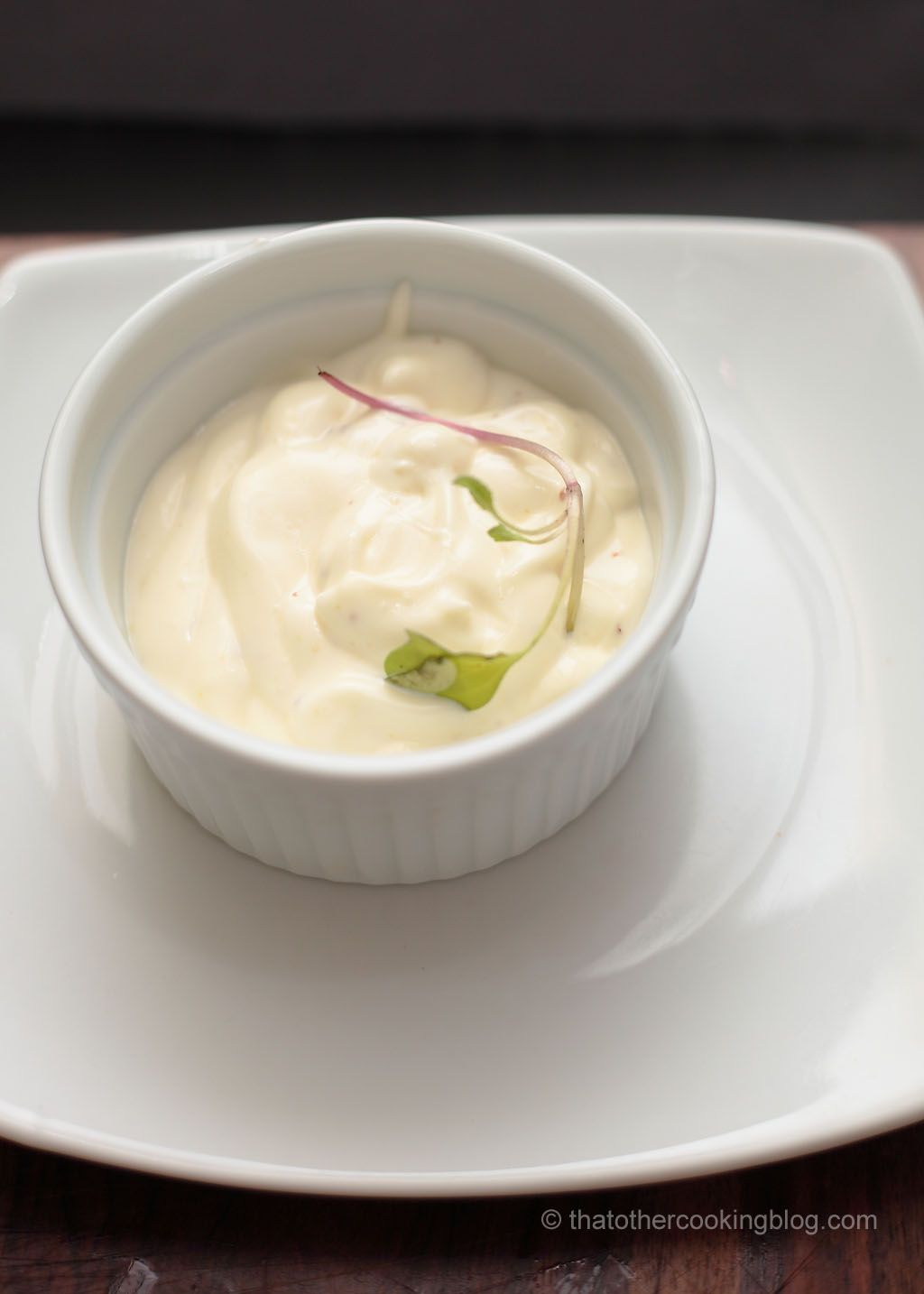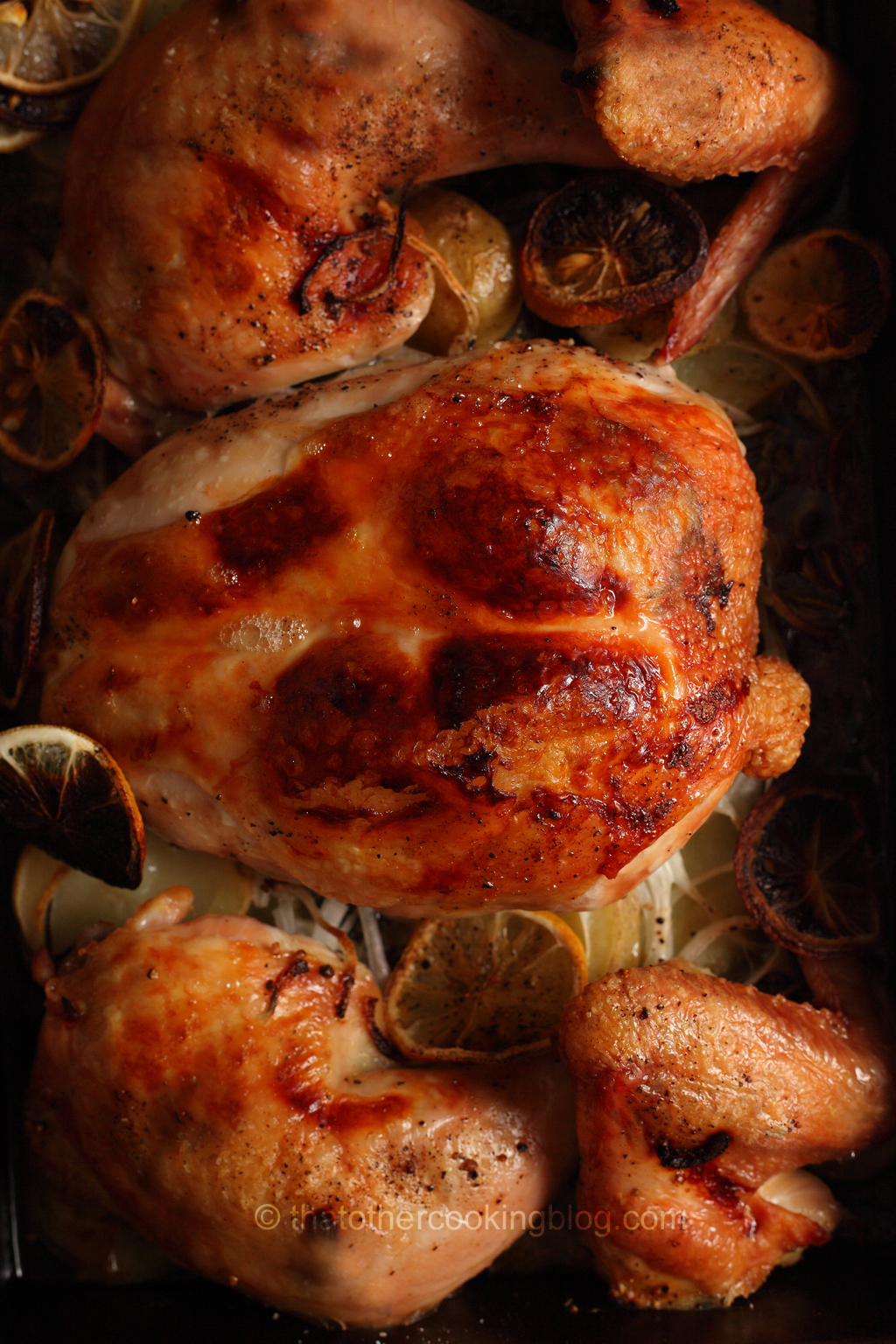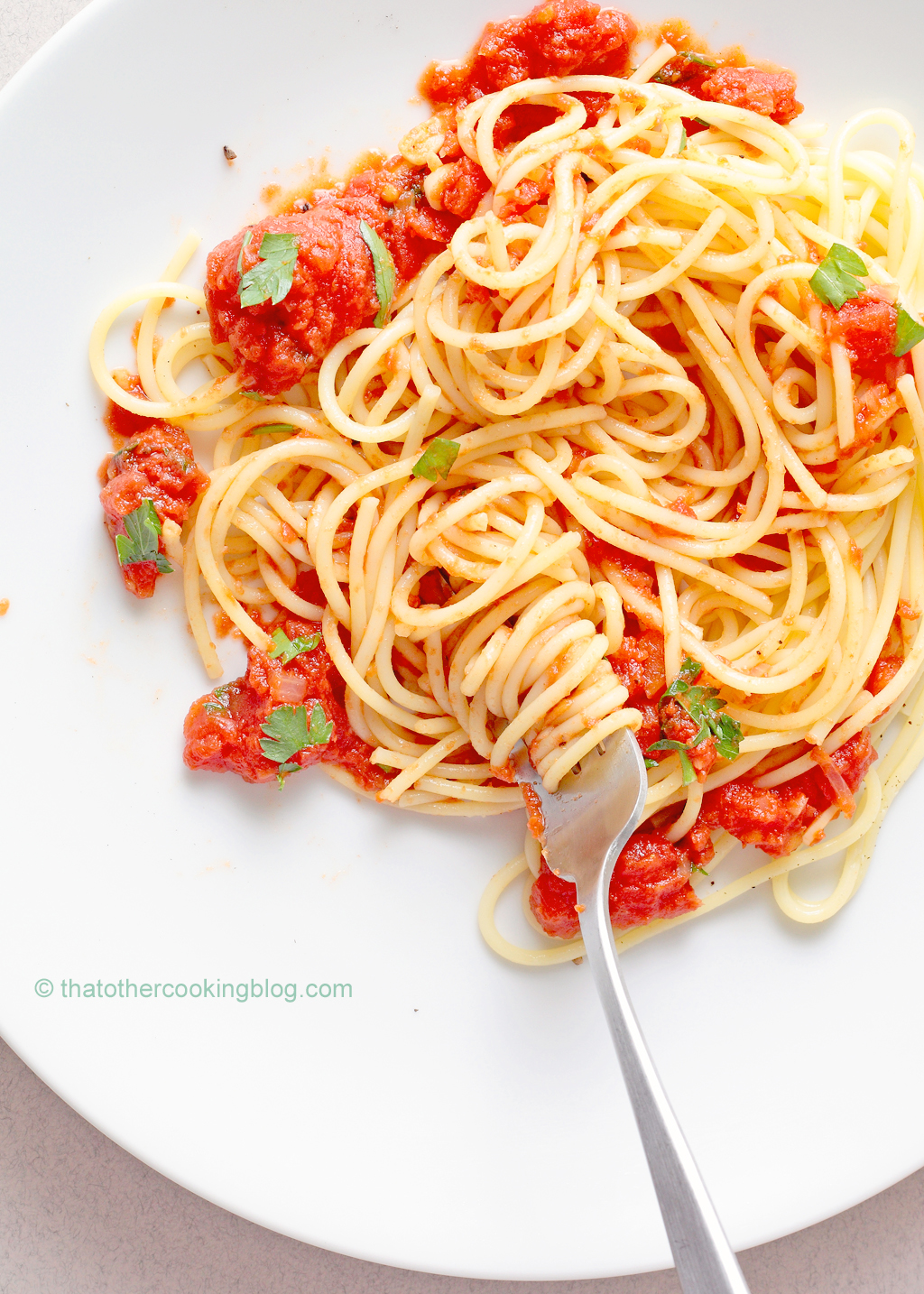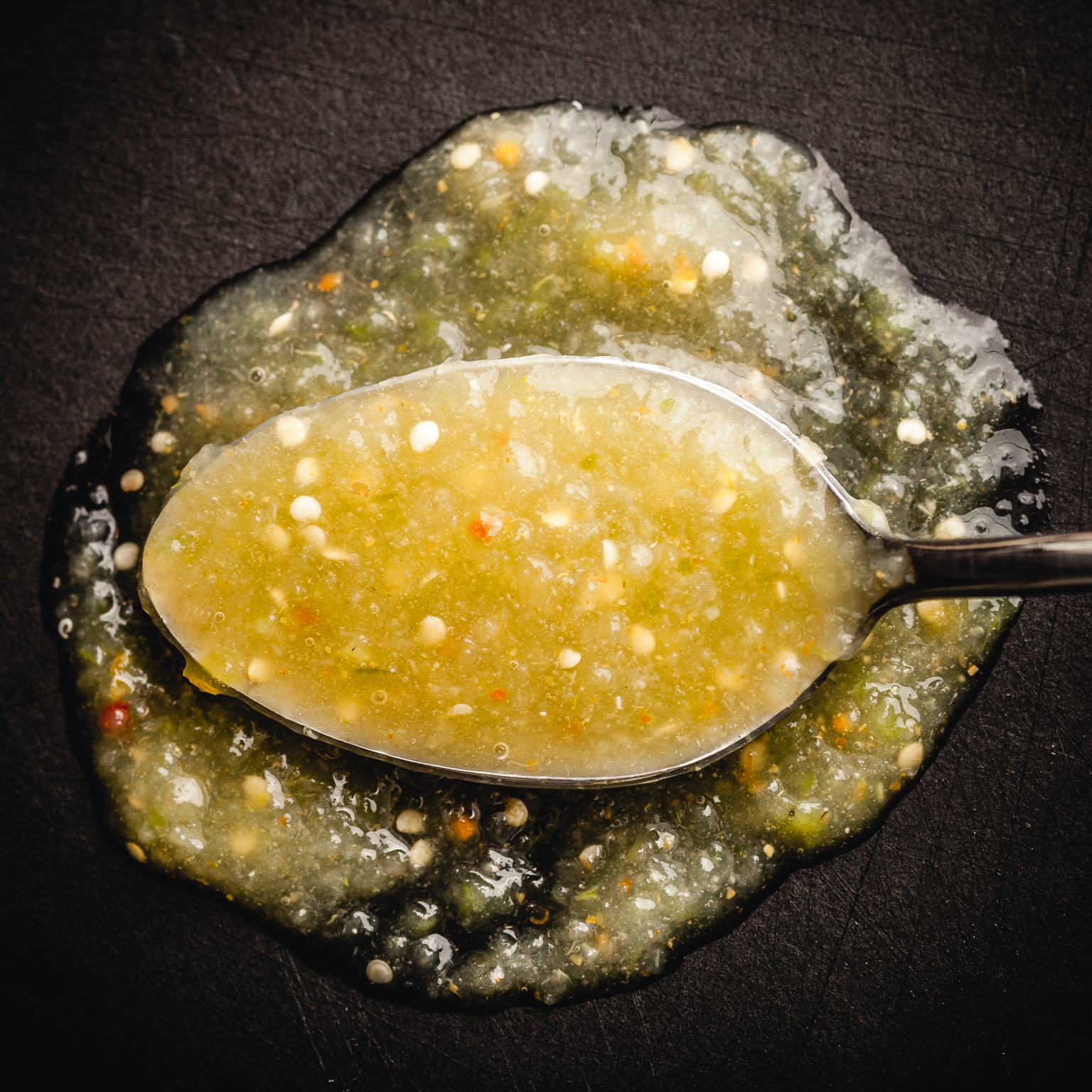A few nights ago when preparing the tilapia croquettes, I had to improvise a tartar sauce to go with it. I had all the ingredients. I even had everything I needed to make the base mayonnaise and I was excited. It had been a long time since I had made mayo at home, and I still remember how much better than store bought stuff it can be. It really is to die for, for those who like mayo of course. I love this emulsion. If you are one of those cooks who likes to make everything from scratch, then mayo is probably in your repertoire. It isn’t easy. Beating this emulsion into submission by hand is a workout to say the least, and in my case, I fail more times than I succeed. Homemade Garlic Mayonnaise isn’t easy.

Maybe you’re a mayo-making devil in which case your secrets are extremely welcome if you care to share them, but if you aren’t, I’m surely not, maybe this post can be helpful. Using the food processor is a popular way of making, but you have to make a large quantity. The blades sit too high (at least on the model I own) and making mayo out of 1 yolk is pretty much impossible. I went online with the typical google search “mayo making science tricks”and a few links popped up. Some told me about stuff I had already read before, but then I came across a link by one of the food sites I follow religiously: www.seriouseats.com In their weekly column, The Food Lab, Kenji Lopez-Alt (what a crazy cool name, right?!) talks about food science and he is great at it too. He has debunked so many kitchen myths he is one of my culinary heroes along with the modernist cuisine team and Harold McGee. Anyways, back to mayo in 2 minutes!!! click here! I hope you find this as cool as I did. Making mayo at home will never be the same. Requires a hand blender, but those aren’t expensive and can also be the perfect birthday present ! Enjoy!
Ingredients (makes about a cup):
1 large egg yolk
1 tablespoon water
1 tablespoon lemon juice (from 1/2 a lemon)
1 teaspoon dijon mustard
1 cup vegetable or canola oil
Kosher salt
1 garlic clove minced (leave this out and you have mayo)
Method:
Really simple. Get all your ingredients in a tall container that fits nicely the head of your immersion bender (hand blender). This is important. You want the liquid ingredients to cover the moving parts as shown in the pics. Blend throughly. I added the garlic and salt after I had a nice emulsion going, but I think it could be added at the beginning as well. It is hard to control the flavoring that way though. I added a little bit, tasted, adjusted the salt, added more garlic. Until I was happy with it.

Wanna get more sous-vide cooking guides and cool cooking how-to’s in your mailbox? You know what needs to be done!
We never spam. You should only be getting updates when new content is posted on the site. We also respect your privacy. We don’t share your email address with anyone and you can unsubscribe anytime!














20 comments
It helps if the oil and the egg yolk are both at the same (room) temperature. Using a refrigerated egg yolk have been the only cases where my mayo failed. No other tricks required. I love the exact same three sources for food science btw 🙂
yeah, there are other things to keep in mind like if using a metal, what kind of metal to use, or using salt before or after the emulsion is created because of how it affects texture, anyways, it’s an interesting subject. I still don’t know why the emulsification power of the yolk would be diminished by the colder temperature, maybe a question for the food lab.
My hunch would be that if the molecules of the egg yolk and those of the oil move at the same speed (i.e. have the same temperature), it is easier for them to become emulsified. But that can’t be completely accurate, as an emulsion is not on a molecular scale.
Yeah, not sure exactly how it works and couldn’t find a way to submit the question to the food lab, and then I got busy doing other things this weekend, but I should try again. One thing though, I try making mayo again yesterday, this time with cold eggs, and still worked, the emulsion came together practically as quickly as in my test with room temperature eggs. So… maybe now I’m even more confused 🙂
Just the way I make mine …. what did we use before the hand blenders. Just love your photos.
patience and lots of eggs 🙂 I’m glad to have found out about this technique, no more store bought mayo! 🙂
Mayo is very easy to make … it’s all about the speed on the blender most of the time *smile and that all the ingredients have the same temperature.
I did a post a while back on home-made mayonnaise too.
http://coolcookstyle.com/2011/06/12/egg-salad-with-basil-on-toast/
So delicious. As a variation, I like to add truffle salt to it and smear the stuff all over toast topped with sliced boiled eggs.
Like you, I use an immersion hand blender, but I’ve also done it by hand and haven’t found it to be that big of a pain. I think the most important thing is to add the oil slowly. Once, someone asked me what my super power would be if I was a super hero. I said that I am pretty good at saving broken mayonnaise 🙂
hahahha!!! that’s awesome 🙂 I just read your post too! wow, that’s no joke! you take your eggs seriously, I respect that 🙂 Love that tip on pricking the bottom of the egg with a needle.. I got into a fight with my mom because I tried to explain to her that eggs cracked because of the air contained in there. I can’t remember what it was that she thought caused the cracks, pretty funny anyways 🙂
That is funny! Yes, people have all kinds of weird ideas about food. I once knew a woman who washed her chicken. Like actually washed it before cooking it. So unnecessary and so wrong!
hahhahah that sounds wrong! Yeah, there are some weird practices out there. Traditions don’t help either (sometimes they do), just doing something because that’s how it’s always been done sometimes only helps people make the same mistakes over and over. Anyways, lots of resources out there now, lots to be learned! It’s a lot easier these days learning good cooking practices and debunking some of the kitchen myths